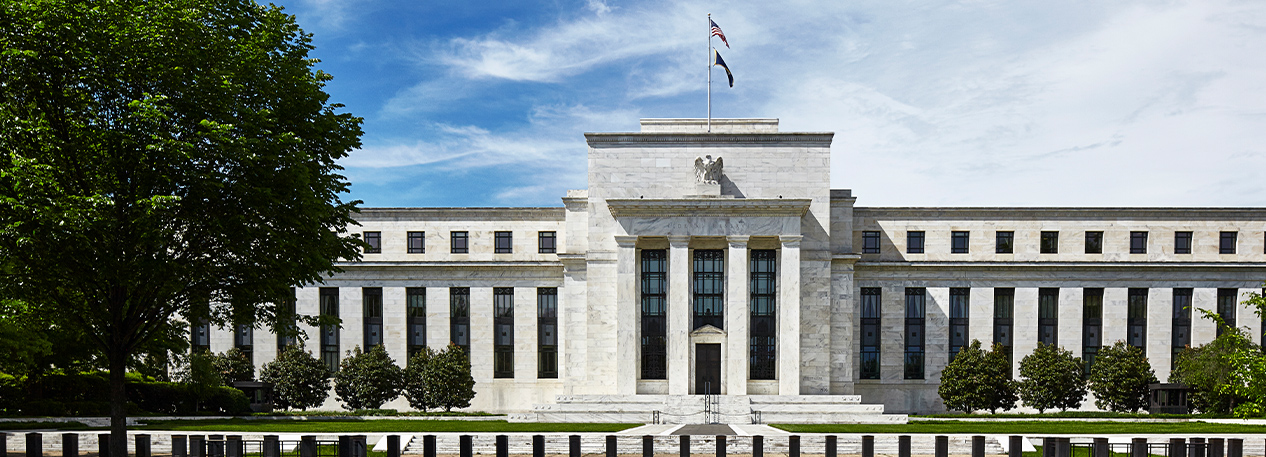It is widely understood that the Federal Reserve, like other central banks, sets its policy interest rate to help steer the U.S. economy toward stable prices and low unemployment. But there is also a lesser-known, “unconventional” monetary policy: A central bank can buy assets, such as U.S. Treasury securities and mortgage-backed securities, to build up its balance sheet. This is known as quantitative easing. (Its opposite is known as quantitative tightening, but for the purposes of this summary, we will focus on quantitative easing.) Historically, large-scale asset purchases have been used when interest rates have hovered near zero and when an extreme economic shock occurs, as happened during the Great Financial Crisis of 2007–2008 and the COVID-19 pandemic of 2020. How do these balance sheet adjustments work in conjunction with conventional interest rate policy to support the real economy?
For his paper, "Monetary Policy with Inelastic Asset Markets," Joseph Abadi of the Federal Reserve Bank of Philadelphia created a model to study how both policy rate changes and balance sheet adjustments transmit through the financial system. By adding complexity to the standard Keynesian model, he has enabled a more realistic portrayal of how households and financial intermediaries — such as banks, asset managers, and insurance companies — react to central bank policy changes. His goal is to show how a combination of conventional and unconventional monetary policies could allow a central bank to optimally manage business cycles and thus minimize or even avoid recessions.
An important feature of his research is that it unpacks how balance sheet adjustments and changes in the policy interest rate, called the “risk-free rate,” affect asset prices and yields. Specifically, he focuses on how these two policy tools affect the risk premium of assets, or the extra return investors receive for holding riskier assets.
Consider the case in which a central bank cuts its policy interest rate to stimulate the economy.1 This policy cut decreases the interest rate that banks charge each other on overnight loans. (Banks loan each other money to help one another cover their overnight reserve requirements.) Since interest rates in the economy tend to move together, a lower policy rate also lowers the interest rates faced by households and businesses, such as the rates charged for car and small business loans. Further, a reduction in the policy rate lowers the risk premia across asset classes.2
If a central bank also undertakes large-scale asset purchases to strengthen the economy, it directly helps financial intermediaries that invest in risky bonds by boosting the value of their bond holdings. Quantitative easing also reduces the risk premia across asset classes and puts financial intermediaries in a position to lend more. Hence, these intermediators act as market stabilizers, helping the central bank achieve its goals.
In Abadi's New Keynesian model, a change in the policy interest rate affects the demand for financial assets, whereas the large-scale purchase of assets affects the supply of assets. This allows his model to explicitly incorporate how unconventional monetary policy transmits through the financial system, which is not part of the standard framework.
Abadi finds that conventional and unconventional monetary policies affect asset prices through an “inelastic” market channel. Policy interest rate adjustments and the large-scale purchase of assets affect bond prices and yields, but capital does not always flow efficiently because households cannot quickly reallocate their portfolios. As a result, these inelastic markets amplify the effect of conventional interest rate policies, and thus central banks may have less control over the interest rates on longer-duration assets.
To maximize the effectiveness of central bank policy, the central bank should both cut interest rates (the conventional monetary policy) and purchase assets at a large scale (the unconventional policy). This dual approach, he finds, helps compensate for the inefficiencies in the asset markets.
Moreover, the asset purchases should remain on the central bank’s balance sheet even after the financial markets have recovered. “Asset prices are more sensitive to asset purchases when markets know those purchases will be long-lasting,” Abadi writes. Moving too quickly to reduce the size of the central bank’s balance sheet may lead to enough volatility to cause a recession.3 For a given balance sheet expansion, this “late-exit” strategy maximizes policy’s ability to influence asset prices. His findings are consistent with real-world observations: Some central banks have maintained a sizable balance sheet even after economic conditions have normalized.
Abadi concludes his working paper by noting that, during a recession, “interest rate policy alone cannot achieve the first-best [that is, the ideal outcome]: asset purchases are required to keep risk premia at their optimal level while interest rates change.” This dual policy approach is particularly important when an economy’s interest rates are low. A combination of conventional and unconventional monetary policies supports household demand by lowering borrowing costs. It also strengthens financial intermediaries, who are vital to the function of the asset markets.
- The views expressed here are solely those of the author and do not necessarily reflect the views of the Federal Reserve Bank of Philadelphia or the Federal Reserve System.
- In the United States, this policy interest rate is called the federal funds rate.
- For more on this topic, see, for example, Michael Bauer, Ben Bernanke, and Eric Milstein, “Risk Appetite and the Risk-Taking Channel of Monetary Policy,” Journal of Economic Perspectives 37:1 (2023), pp. 77–100.
- At the other extreme, “if the central bank maintains a large balance sheet for too long, asset prices and output may undershoot once the asset purchase is unwound.”
